One of the announcements last week that flew under the radar since it wasn't explicitly mentioned during Apple's event was the introduction of Beats Flex, new wireless earphones that represent an upgraded version of the previous BeatsX. Not only do Beats Flex come with some upgrades, but they also carry a much lower price of just $49.99, representing the most affordable way to get into Apple's wireless earphone ecosystem.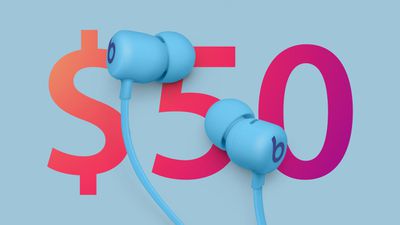
The launch of Beats Flex comes at the perfect time, given that Apple has stopped including wired EarPods in the box with new purchases of iPhones, even older models that used to include them. EarPods are still available as a standalone purchase for a lower price of $19, but if you're going to be buying headphones, it's worth looking at wireless options like Beats Flex.
I've been using a pair of Beats Flex in a bright "Yuzu Yellow" color for almost a week, and I can say that they offer great value, particularly for those stepping up to wireless earphones for the first time, as those users are less likely to notice some of their shortcomings compared to more expensive Beats and AirPods options.
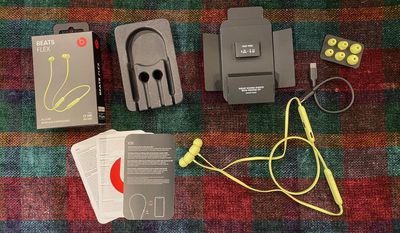
Right off the bat, I'll say that if you've used BeatsX, then you have a great idea of what to expect with Beats Flex. Beats Flex are a pair of sealing in-ear earphones connected by a wire designed to be worn around the neck. Along the connecting wire are a couple of modules housing the electronics, controls, and battery for Beats Flex, and they sit comfortably at the sides of the neck.
With the cable wrapping around behind the neck, it's super easy to pop one or both earphones out of your ear without worrying about losing them. And when you're taking a break from listening, the two earphones click together magnetically to keep the whole thing secure around your neck.
Fit
Beats Flex come with four sizes of eartips, so most people shouldn't have much trouble finding a good fit. The soft, pliable eartips are relatively easy to swap out, but you also don't have to worry about them coming loose unintentionally.
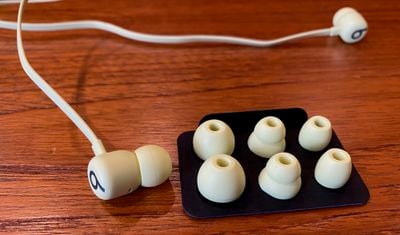
Similar to AirPods Pro, Beats Flex eartips are designed to seal in the ear canal, which helps secure them in place during activity and block out ambient noise.
As an everyday AirPods Pro user, one thing about Beats Flex that took some getting used to was the cables dangling from my ears. They put a little bit of pressure on the ears, and with the seal in the ears, any sounds from the cord brushing against my shirt or the side of my face were transmitted directly into my ears. Between a combination of making sure to adjust how the cord sat on my neck and simply time spent using Beats Flex, the sounds became much less annoying.

The cable is made of Nitinol, a nickel-titanium alloy that offers a shape memory effect to keep the cable looped comfortably around your neck while also allowing the earphones to be coiled up and tossed in a bag or put in your pocket.
Overall, I found Beats Flex to be quite comfortable, as I was able to wear them for many hours at a time with no discomfort in my ears, the cable draped around my neck didn't really bother me at all, and I quickly got used to having wires coming out of the earbuds. I still prefer my AirPods Pro, of course, but I found little to complain about when comes to fit with Beats Flex.
Sound Quality
I found the sound quality of Beats Flex to be quite good for a lower-priced set of earphones, with the sealing eartips helping to shut out ambient sound and offer a full, resonant sound. Bass tones come through rather strongly, while mid and particularly highs feel weaker, but overall these earphones compare quite well to competing models.
Unlike AirPods Pro, Beats Flex don't have active noise cancellation, but I still found they did a pretty good job shutting out background noise and letting me focus on what I was listening to.
Microphone audio quality is solid, with my voice coming through clearly on phone calls and Siri recognizing my commands and requests just fine. Beats says it has improved microphone performance compared to BeatsX with optimized placement and an advanced voice algorithm that helps improve audio quality and mitigate wind noise.
Controls
With nearly identical neckband housings on each side, it takes a little bit of practice to remember which functions are located where, but once you learn that it's easy to control things by feel.
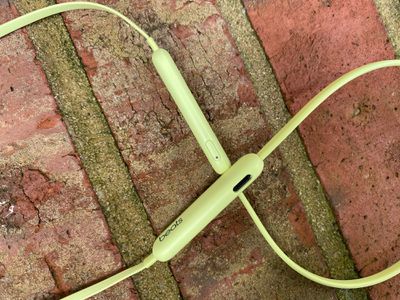
The right-side housing includes just a single button along the edge that's easy to identify by feel, and that's the power/pairing button. Pressing and holding the button will turn Beats Flex on or off, and activate pairing as needed. If you're using them with an iOS device, you'll get quick pairing functionality by simply bringing Beats Flex close to your device after initially turning the earphones on. Android users can pair them either through the Bluetooth menu on their device or by downloading the Beats app for Android that gives you quick pairing access, firmware updates, product details, and information on battery level.
The left-side housing includes a pair of buttons, but they're easy to distinguish between by feel. Along the edge is an elongated volume rocker, while a raised, round button on the face of the housing offers playback control. A quick press of the playback control will play or pause your audio or answer or hang up on a phone call. A double press skips forward to the next track, while a triple press skips backward, and pressing and holding activates Siri.
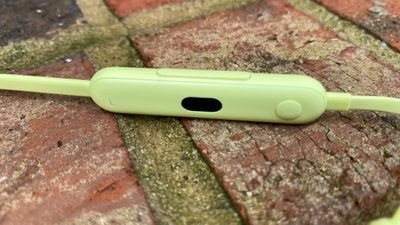
The left-side housing also includes a black patch where the microphone lives, as well as the USB-C port. The left and right housings have small "L" and "R" labels to help you figure out which way to wear the earphones, but it doesn't take long to learn which way is correct by glancing at the physical features of the housings or even just by feel.
This setup is a bit different from BeatsX, which actually had a third housing located closer to the ear on the left side that was where all of the physical controls were located. I think I prefer the simpler Beats Flex layout, which helps reduce weight (they're 8% lighter than BeatsX) without compromising usability.
Connectivity
While Android users will get a fairly basic Bluetooth earphone experience with Beats Flex, the included W1 chip takes things to the next level for Apple users. It allows for quick pairing, seamless switching between devices linked to the same Apple ID, and Audio Sharing that lets you connect two pairs of compatible AirPods and Beats to a single device simultaneously to listen to the same content.
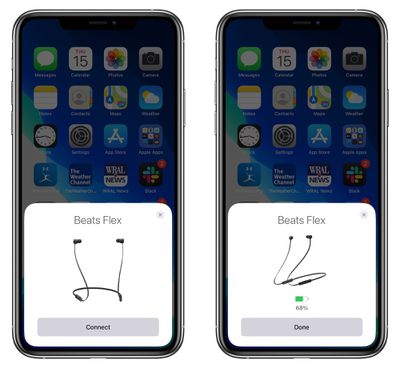
It's important to note that the W1 chip in Beats Flex is the same one that was in the previous BeatsX, and it's not the more advanced H1 chip found in the second-generation AirPods, AirPods Pro, Beats Solo Pro, Powerbeats Pro, and the latest Powerbeats. That means Beats Flex don't support the new feature in iOS 14 that will automatically switch your earphones over to another device if you start playing audio on it.
Without the H1 chip, you also won't get hands-free "Hey Siri" support, so you'll have to press the voice assistant button on the left-side neckband housing in order to access Siri.
Range was solid in my testing, as is to be expected thanks to the W1 chip. It might not be quite as good as earphones with an H1 chip, but it does seem to outperform standard Bluetooth connections and I was able to receive solid audio reception from a device on the second floor of my house as I walked essentially the entire perimeter of my home, with only a couple of dropouts in spots of especially high physical interference.
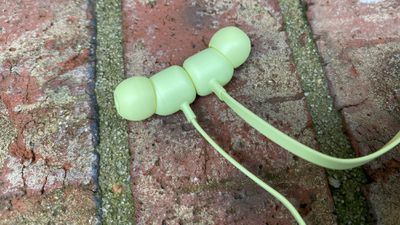
Beats Flex don't have the same ear detection that AirPods have, which automatically plays or pauses when you insert or remove the earphones, but Beats Flex come close by offering an alternative mechanism in which magnetically clicking the earphones together pauses music while separating them resumes playback. It results in a brief second where audio is playing while the earphones aren't in your ear, but it's a very workable solution.
Battery Life and Charging
Beats says that Beats Flex will last for around 12 hours on a single charge, up from 8 hours with BeatsX. I found the 12-hour rating to be pretty accurate based on my listening spread across multiple sessions, so you'll likely be able to get several days' use out of them before needing to recharge them, even with fairly heavy usage.
When it comes time to charge Beats Flex, you'll need a USB-C cable, which is another change compared to BeatsX that used Lightning. A 6-inch USB-C to USB-C cable is included with Beats Flex, but you'll need to supply your own power adapter or connect them directly to a computer.
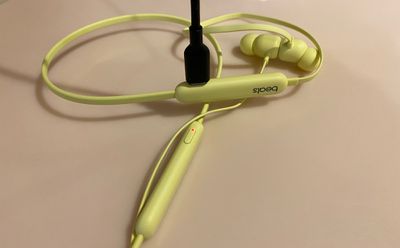
I don't mind the change to USB-C, as I've got plenty of USB-C cables just sitting around the house for charging my iPad Pro and Mac notebooks, but for some, the change might be a bit of an inconvenience. The switch to USB-C does make it much easier for Android users, as they generally have plenty of USB-C cables and may not already own any devices that charge over Lightning.
Just like with the Lightning port on BeatsX, the USB-C port on Beats Flex does not have any sort of cover on it. That leaves the port open to the sweat, rain, and dust, but it doesn't appear that should be a significant concern and it avoids the awkward port covers seen on many other devices.
It took less than 90 minutes to fully charge Beats Flex once I depleted their battery, and a 10-minute Fast Fuel charge when the battery is low will give you up to 1.5 hours of playback time in a pinch. There's a small LED on the power button that pulses red while charging and turns white once Beats Flex are fully charged.
Price
It's really hard to beat the $49.99 price tag of Beats Flex, particularly if you're in the Apple ecosystem, as you get a solid pair of wireless earphones that offer many of the bonuses made possible by Apple's custom chips.
Thinking back to BeatsX, those earphones were introduced in early 2017 with a price tag of $150. That price was dropped over time to $120 and then $100, although those price cuts saw a few other changes like the elimination of an included carrying case and the fins intended to allow for even more in-ear fit options. Yes, BeatsX were frequently on sale for even less than the eventual $100 list price, but dropping all the way to an MSRP of $50 is a big move for Apple and Beats as the march toward the ubiquity of wireless headphones continues.
Final Thoughts
Beats Flex are great entry-level earphones that give you most of the Apple-specific features you see on more expensive Beats and AirPods models. With solid sound quality for the price and a comfortable fit, it's hard to find much not to like about them.
The cable between the earphones makes them a bit more noticeable while wearing, compared to something like AirPods. But that cable also helps keep you from losing your earbuds without resorting to something like over-ear hooks like on Powerbeats Pro that some find bulky and uncomfortable, or Powerbeats, which include both hooks and a cable.
The cable and magnetic earphone attachment mechanism also let you easily take them in and out throughout the day without needing to put them back into a case, and the 12-hour battery life is well beyond what AirPods or even Powerbeats Pro can deliver. Regular Powerbeats offer up to 15 hours of battery life but are less convenient to take in and out of your ears.
Apple and Beats aren't known for offering cheap products, but at just $50, Beats Flex will likely be the perfect starter set of earphones for many of those looking for a bit more freedom than you get being tethered to their device with wired earphones. They're definitely a way to dip your toes into Apple's wireless earphones without having to step up to more expensive options from Apple and Beats that are all at least three times the price unless you find a great deal.
Beats Flex are available to order now in Beats Black and Yuzu Yellow for an October 21 launch, with Smoke Gray and Flame Blue color options coming in early 2021.























Top Rated Comments
This whole "environmental" BS spiel from Apple this iPhone launch is such a sham. Ala, AirPods, AirPods Pro, Beats Flex. Such a waste. Consumable, to the MAX